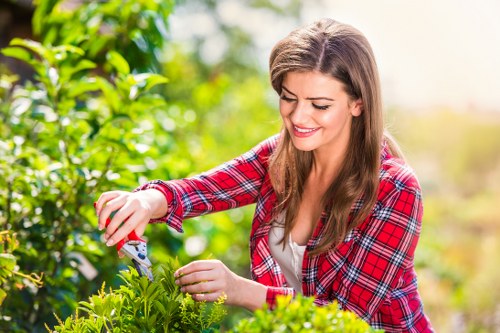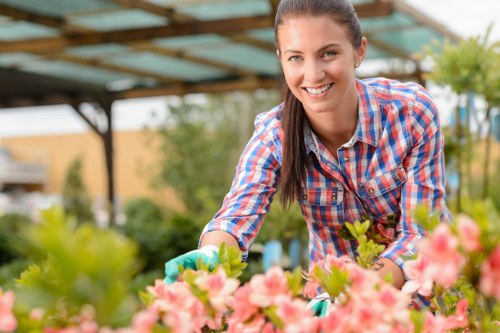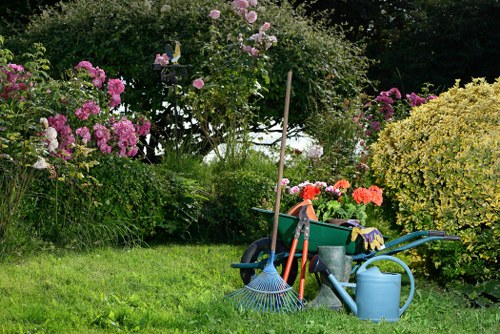
Gardeners Barking: Understanding the Voices in Your Garden
Gardeners barking isn't about actual dogs in your garden, but rather the unique sounds and interactions that occur between gardeners and their plants, tools, and environment. Whether you're a seasoned horticulturist or a weekend green thumb, the dynamic between gardener and garden can be both fascinating and mystifying.
In this article, we'll delve deep into the phenomenon of gardeners barking, exploring its various aspects from the emotional connection gardeners have with their plants to the practical communication methods they employ to maintain a thriving garden.
Understanding the intricacies of gardeners' interactions with their gardens can enhance both the gardening experience and the health of the plants themselves. Let's explore the myriad ways in which gardeners 'speak' to their green spaces.
The Emotional Connection: More Than Just Plants
Gardeners often develop a profound bond with their gardens. This emotional connection can be seen as a form of communication or 'barking' that goes beyond mere maintenance. It's about nurturing life, fostering growth, and creating a sanctuary that reflects personal values and aesthetics.
Emotional investment in gardening can lead to a deeper understanding of plant needs and behaviors. Gardeners attuned to their environment are better equipped to respond to the subtle signals plants give, such as changes in color, wilting, or leaf drop.
Moreover, the act of gardening itself can be therapeutic, providing a sense of purpose and accomplishment. This emotional investment encourages gardeners to invest time and effort into their gardens, leading to more vibrant and healthy plant life.

Communication Through Care
One of the most interesting aspects of gardeners barking is the non-verbal communication that occurs between gardeners and their plants. This includes actions like watering, pruning, and repositioning plants to maximize sunlight exposure.
Each action taken by a gardener sends a message to the plant, much like a language. For instance, careful pruning communicates a desire for growth and health, while overwatering might inadvertently send a sign of neglect. Understanding this silent dialogue is crucial for successful gardening.
Additionally, gardeners often use tools and techniques that can be seen as extensions of their communication method. From the gentle brush of a leaf to the precise cut of scissors, every movement plays a role in the ongoing conversation with the garden.


Tools of the Trade: Enhancing Communication
The tools gardeners use are not just practical implements but also essential instruments in the process of communicating with plants. Tools like pruners, trowels, and watering cans are extensions of the gardener's intent and care.
Each tool has a specific purpose and, when used correctly, can improve the health and appearance of the garden. For example, using a sharp pruner ensures clean cuts that promote healthy growth, while a well-calibrated watering can delivers the right amount of moisture without over-saturating the soil.
Moreover, the maintenance of these tools is a form of respect and dedication to the gardening process. Keeping tools clean and in good condition signifies a gardener's commitment to maintaining a thriving garden.

The Sounds of the Garden: Beyond the Visual
While much of gardening is visual, the auditory aspects play a significant role in the overall experience. The sounds of rustling leaves, flowing water, and even the gardener's own movements contribute to the ambiance of the garden.
These sounds can create a soothing environment that enhances the gardener's connection to their plants. Listening to the garden can help gardeners become more attuned to the needs of their plants, allowing them to respond more effectively to signs of stress or growth.
Incorporating elements like wind chimes or water features can also add to the sensory experience, making the garden a more engaging and enjoyable space for both the gardener and visitors.
Conclusion: Embracing the Dialogue
In essence, gardeners barking symbolizes the intricate and harmonious relationship between gardeners and their gardens. It's a continuous dialogue that requires attention, care, and understanding. By recognizing and nurturing this relationship, gardeners can create thriving, beautiful spaces that reflect their dedication and love for nature.
Whether through emotional connections, careful actions, or the sounds that fill the air, the communication between gardener and garden is a testament to the profound bond humans can share with the natural world.


